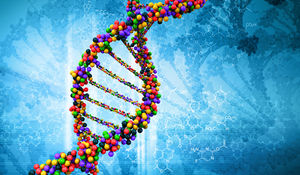Designed Genetic Coding

This is an article that deals with the concept of DNA Sequencing which is a topic in the realm of Genetic Science. This article will discuss, explain and recount the exact sequencing process utilized in the neo-natal process from initial conception to the point of delivery of a child including potential side effects and the point of current research and application within Sayaffallah.
History
RNA Strand Sequencing
In 1856 Leopold Ziegeiter, a prominent researcher and scientist in Sayaffallah discovered a prominent strand of RNA within the sequence of dioxyribosenucleic acid (DNA) that could be manipulated for small synthetic variations in its initial strand layers. By changing the quantity of adenineand cytosine within the nucleotide of DNA it was found that a 12 rather than 5 methyl cytosine strand was replicated and modified (12mC) because of the significant increase it was determined through the trial phase that it increased and enhanced the resiliency of the DNA strand from mutation in the later phases of conception and fetal development.
Ziegeiter was ecstatic at the discovery of this strand however the government at the time was less ecstatic and ordered Zeigeiter on pain of death to keep his discovery secret and to continue to develop new innovations and breakthroughs for the good of the country. The data was thus internally kept as a state secret and only shared on a need to know basis with scientists who were also researching the same topic and utilizing the exact same DNA strands that Ziegeiter was using in his experimental stages.
Genome Mapping
1862 brought new developments from the laboratory of Ziegeiter and his staff of now nearly 200 scientists sworn to secrecy and kept in luxurious surroundings of a mountain retreat known as Zatergast, the new developents were a complete mapping of the human genome specifically all of its strands and its sequencings as well as earlier cross referencing with the development of disorders and disease from the parents chromosomal exchanges during fertilization of the egg immediately after intercourse. The mapping of the genome was a huge accomplishment and allowed researchers to see the entire human genome in vivid detail and of course able to see which patterns and sequences led to which conditions and disorders and which ones accentuated the human individual either by increasing appearance or intellectual curiosity or athletic ability.
Researchers found that those in Sayaffallah who at the time had a higher disposition to attaining a disorder or disease or condition later in life were born with incredible abilities ranging from intellectual capacity to attractiveness. It was determined that these abilities were a survival mechanism occurring naturally in the body to help it survive future mutations of the genetic code. Researchers at this time came up with the Genome Survival Theorem which in short hypothesized that the genome was always constantly and rapidly changing and mutating over time as the body degraded and went beyond its peak abilities thus requiring a survival mechanism of either intellectual capacity, attractiveness or athletic ability as means of coping. Scientists observed that those who early on had a higher ability in these three key areas later contracted debilitating disease, disorder or condition that limited their overall functionality yet these abilities provided them with significant quality of life.